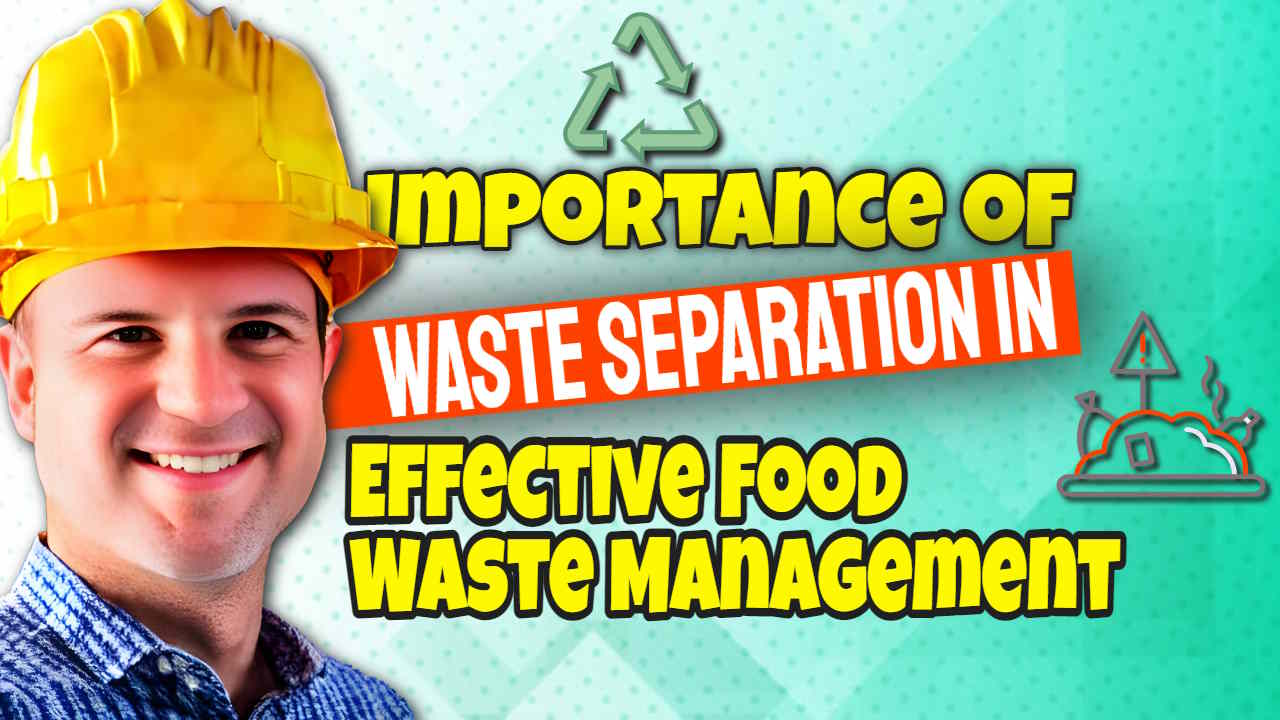Importance of Waste Separation in Effective Food Waste Management
by FoodEnviro
Posted on 30-03-2023 01:21 AM

Waste separation is an essential aspect of effective waste management, and it is becoming increasingly important in the context of food waste.
Proper waste management ensures that waste materials are handled safely and responsibly to minimize environmental pollution, health risks, and resource depletion. However, with the increasing amount of waste generated globally, waste management has become a challenging task for many governments and municipalities.
Waste Separation - A Definition
Waste separation is a strategy that involves the sorting of waste materials into different streams for appropriate treatment and disposal. In the case of food waste, the process of waste separation helps to reduce the volume of food waste that ends up in landfills and incineration sites.
By sorting food waste materials, it is possible to recover the valuable resources of food waste as a pulp, and recycle the "rejects stream" and minimize the environmental impact of food waste disposal.
The benefits of waste separation are numerous, and they extend beyond environmental protection. Effective waste separation programs can help to reduce greenhouse gas emissions, conserve natural resources, create job opportunities, and promote sustainable development.
In the context of food waste, waste separation programs can also help to reduce food waste generation and promote food waste reduction initiatives.
Reduction of Environmental Pollution
Waste separation is an effective way to reduce environmental pollution. When food waste is not separated, it can lead to contamination of other waste streams and increase the risk of environmental pollution. For example, when food waste is mixed with other waste streams, it can contaminate recyclable materials, making it difficult to recover them.
Separating food waste from other waste streams can help to recover valuable resources, such as compost, which can be used as a fertilizer for agriculture.
Reduction of Greenhouse Gas Emissions
Waste separation can help to reduce greenhouse gas emissions in the context of food waste. When food waste is sent to landfills, it decomposes anaerobically, releasing methane gas, which is a potent greenhouse gas.
Methane gas contributes significantly to global warming, and food waste is one of the major sources of methane emissions. By separating food waste from other waste streams, it is possible to divert it to anaerobic digesters, where it can be used to produce biogas, which can be used to generate electricity.
Resource Conservation and Recovery
Waste separation can help to conserve natural resources and recover valuable materials in the context of food waste. For example, when food waste is separated, it can be used to produce compost, which can be used to improve soil quality and increase crop yields.
Additionally, when food waste is separated from other waste streams, it can be used to produce animal feed or be redistributed to food banks or other charitable organizations to reduce food waste.
Creation of Job Opportunities
Waste separation can create new job opportunities in the food waste management industry. Effective food waste separation programs require the use of specialized equipment, such as depackaging machines, which need to be operated and maintained by skilled personnel.
Additionally, food waste reduction initiatives such as redistribution to food banks or charities require trained personnel to operate and manage the processes.
Best Practices for Food Waste Separation
To achieve the maximum benefits of food waste separation, it is essential to implement best practices in waste management. Some of the best practices for food waste separation include:
-
Education and awareness campaigns: Public education and awareness campaigns can help to promote food waste separation programs and encourage participation from individuals and businesses.
-
Proper storage and collection of food waste: Food waste materials should be stored and collected in separate streams to minimize contamination and improve the recovery of valuable resources.
-
Regular monitoring of food waste management practices: Regular monitoring of food waste management practices can help to identify areas that require improvement and ensure that food waste separation programs are working effectively.
Challenges in Food Waste Separation
Despite the benefits of food waste separation, there are challenges that need to be addressed for effective food waste management.
One of the biggest challenges in food waste separation is avoiding size reduction of plastic packaging, which can result in the creation of microplastics.
When plastic packaging is crushed, milled, or cut, it can break down into small particles, which are too small to be captured by traditional filtration systems.
These microplastics can then enter the environment and have a significant impact on wildlife, marine ecosystems, and human health.
The Hidden Danger of Microplastics
When microplastics escape into the environment, they can have a range of hidden dangers that are often not immediately apparent. For example, microplastics can enter the food chain and accumulate in the tissues of animals and plants, which can have implications for human health.
They can also affect the behavior, growth, and reproduction of wildlife, leading to population declines and ecosystem disruptions. Furthermore, microplastics can persist in the environment for hundreds of years, meaning that they will continue to pose a risk long after they have been released.
Given these hidden dangers, it is essential to take steps to minimize the creation of microplastics and prevent them from entering the environment in the first place.
Avoid the Creation of Microplastics
To avoid the creation of microplastics, it is essential to use depackaging equipment, which can separate food waste from plastic packaging without causing any damage to the packaging. Depackaging machines use mechanical or thermal methods to separate food waste from packaging, without crushing or cutting the packaging.
In addition to using depackaging equipment, it is also essential to promote the use of sustainable packaging materials, such as biodegradable and compostable packaging. These materials can be easily separated from food waste and do not contribute to the creation of microplastics.
Concluding on the Importance of Waste Separation in Effective Food Waste Management
In conclusion, waste separation is crucial for effective waste management, especially in the context of food waste. By separating food waste from other waste streams, it is possible to reduce environmental pollution, greenhouse gas emissions, and conserve natural resources.
However, to achieve the maximum benefits of food waste separation, it is essential to implement best practices in waste management, promote sustainable packaging materials, and avoid the creation of microplastics by using depackaging equipment.




